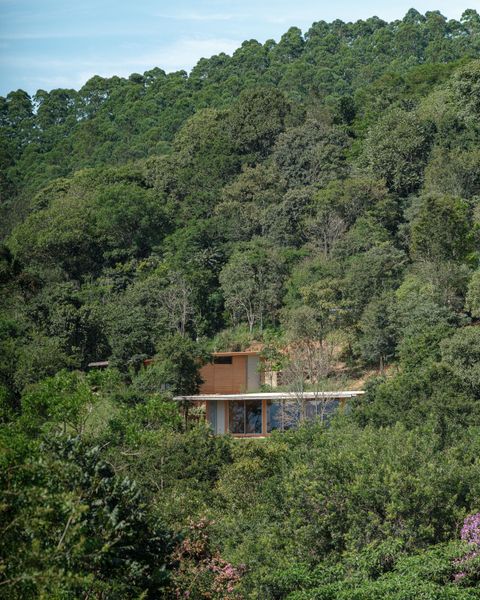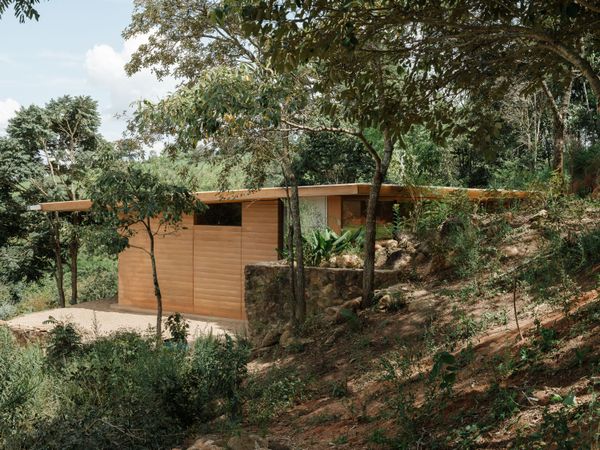Made with a new modular method, the handcrafted units reflect a desire to create a healthier relationship between people and planet.
“My beginning in this life was in nature,” Lia Albejante says, her voice lilting through the phone. In her earliest years, she lived in a small village along a river bordering Brazil and Bolivia. Nature was everywhere, but roads were not—if you wanted to leave, you were going by boat. At three years old, her parents moved to the countryside near São Paulo, an area that was still connected to nature albeit slightly less remote. Then, at 18, she finally left for the city to attend university before traveling abroad.
Lia is a psychologist who emphasizes the therapeutic use of psychedelics, particularly psilocybin and DMT. As her work and life progressed, living in nature became increasingly important. “What is outside is inside. So when we see what we are doing with our planet, it’s also what we are doing to our bodies,” she says. “In my work as a psychologist, one of my goals is to connect people to art, their bodies, and nature. And I think by living in nature, I’m able to learn more about this human dimension because our body is also nature.”

Arquipélago Arquitetos built three rammed earth homes in Piracaia, a village about two hours from São Paulo.
Photo: Pedro Kok
In her 40s and living alone in São Paulo, she was ready to get out of the city. Beyond simply being closer to nature, Lia wanted a home that was connected to it: as peaceful and sustainable as possible—and also beautiful. She learned about rammed earth houses in a Netflix documentary and knew immediately that that was what she wanted.
Starting with property in a small village outside of Brazil, Lia worked with Arquipélago Arquitetos to develop prototypes for an ecovillage comprising three homes—one for herself and two to sell to like-minded individuals. The experimental residences—a studio, one-bed, and two-bed unit—were built, in a sense, with a modular method developed by the firm. Wooden frames to create foundations and rammed earth walls were used repeatedly and sequentially to grow the number of rooms with each consecutive plan.
Lia says that while the homes aren’t completely organic, as she would have liked, the rammed earth construction was the best way she had found to support her preference for connecting with and supporting the natural world. “The house represents my view of life in some way—how to be living as a human being on this planet,” she says.
Here, Arquipélago Arquitetos cofounder Luís Tavares shares how his firm built Lia’s homes.

The homes—a studio, one-bed, and two-bed sized at 538, 1,076, and 1,245 square feet—are built into the hillside, with a row of clerestories at the rear. The roofs are aluminum.
Photo: Pedro Kok
A Natural Start
Luís Tavares: Piracaia is a small village in the countryside of São Paulo, about two hours from the city. It was started in the ’90s by people that wanted to build a sustainable place. There are construction rules, like how much concrete you can use. It’s a little bit controlled. At the start, they were more strict. Now they are more easygoing, but you have to present a project for approval before building. There are maybe 40 houses there.
Lia is very connected with the perspective of sustainable worlds and the natural use of materials. She wanted to create a modular design on her land in Piracaia that could be constructed in other places too. She found us because we had built with earth before. We had done some construction that was reproducible, but that also had an element of craftsmanship.

The homes use rainwater collected by shed roofs.
Photo: Pedro Kok
See the full story on Dwell.com: Construction Diary: Psychedelics Inspired a Therapist to Build a Rammed Earth Ecovillage in Brazil
Related stories:



